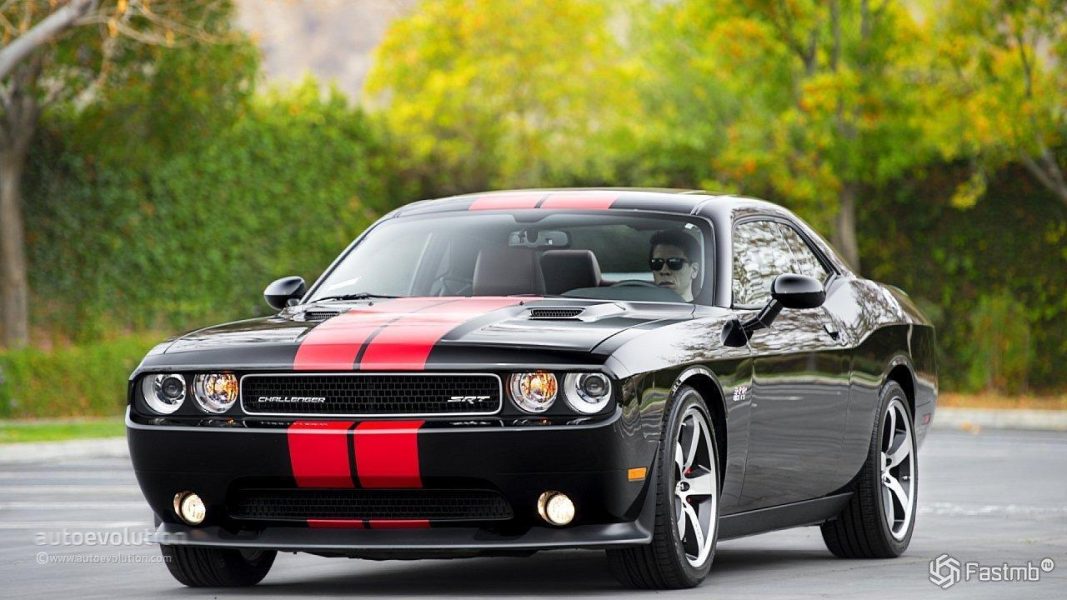
Dodge Challenger SRT8 Review
We had just turned off Rodeo Drive in Beverly Hills, Los Angeles, and were waiting at a traffic light when there was a thunderous roar within earshot. Turning our heads, we searched for the source of the noise.
A few seconds later, a metallic gray-gold ghost appeared next to us, low, vile, vicious and nasty in appearance. It was the new widebody Dodge Challenger SRT8 Group 2. What a name. Which car….
HSV BEATER
Aussies love their HSVs and FPVs, but none of them can even come close to the Group 2 Challenger. It's one of the most muscular muscle cars on the streets of the US, perhaps second only to the forthcoming Ford Mustang Shelby GT500. Who cares, we love Dodge.
Old and new muscle cars are now huge business in the US, and manufacturers are offering a tasty V8 metal feast to enthusiastic Prius-weary buyers.
Group 2 rampaged away from the lights with a sound that could shatter windows 1000 paces away, the rear wheels shaking as the tires struggled to handle the massive power and torque generated by the supercharged V8 engine. The driver then stopped at the next traffic light. Ha! What a show.
The standard Challenger SRT8 is a good thing, fitted with a 350kW/640Nm 6.4-litre V8 engine and various goodies.
WHO IS RESPONSIBLE
The Group 2 version is a significant step forward and is built around parts supplied by CDC (Classic Design Concepts) in Michigan. The CDC has been adding a visual touch to cars since 1990, but with the Challenger coming out on the outside and under the hood, they've taken a lead.
High quality CDC components are sought after by premium tuning companies such as Saleen and Roush. They don't build complete cars, preferring to have customers build cars for themselves. But Group 2 looks like it came straight out of a factory.
Inspiration for the brutal-looking beast goes way back into the 1970s Chrysler muscle cars — the Plymouth Hemi Barracuda and earlier Challengers including race versions that competed in Group 2 events of the era. The bulging rear quarter panel extensions have a direct link to the 1971 Plymouth Hemi Barracuda.
PACKAGE
What does the Group 2 package include? New composite front guards, left and right front spoilers (side wings) and "billboard" rear fascia and mudguard recess extensions. New body panels increase the width of the Challenger by 12 cm.
The visual effect is stunning – and functional, allowing for much larger 20-inch wheels and tires to improve traction and cornering grip. Other CDC options include a stainless steel wire mesh grille, sequential taillights and a fully functional hood system.
CDC can also point you in the right direction for engine modifications, including a Vortech supercharger that works in conjunction with a shake system to boost the Hemi V8's output to 430kW (575hp) from around 800Nm.
And out the back, a Corsa exhaust system is essential to deliver that muscle car sound. Also available is a KW coil over suspension system for better handling together with six pot Brembo brakes on large diameter drilled discs.
BIG TICK
The car we saw fit the bill and retailed in the US for around $72,820 - just a small change when you look at how much HSV and FPV charge for smaller cars. The 2 Group is beautiful in its own way and has more of an allure power than any Ferrari you want to mention.
It's a bold and daring car with signature daytime running lights on the grille surrounding amber turn signals. Woo hu. We weren't able to spin the drive, but reports say the performance matches the looks - keep captives off the track in potentially less than 4.0 seconds of 0-100 km/h.
Owners say it delivers capable handling and braking and a sound to rival the Benz SLS on full song. It comes with either a six speed manual or six speed auto. Hope it comes here.

